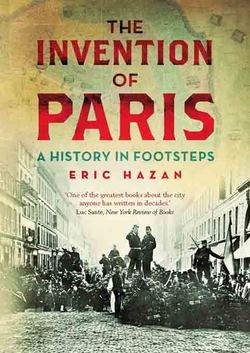Читать книгу The Invention of Paris - Eric Hazan - Страница 24
На сайте Литреса книга снята с продажи.
Saint-Sulpice
ОглавлениеTo pass from the Luxembourg to Saint-Germain-des-Près you have to cross the little quarter of Saint-Sulpice, and to reach its central square you must choose between three streets which, although all parallel, sloping, short and of the same era, have each to my eyes a different charm. Rue Férou has perhaps the most perfect architecture. Rue Servandoni is the setting for an important episode in The Three Musketeers, on which Umberto Eco writes: ‘Alas, our empirical reader will certainly be moved at the mention of the Rue Servandoni, because Roland Barthes lived there, but Aramis couldn’t have, because the action takes place in 1625 whereas the Florentine architect Giovanni Niccolo Servandoni was born in 1695, designed the façade of Saint-Sulpice church in 1733, and had the street dedicated to him only in 1806.’161 For my part, I always choose the third, Rue Garancière, not for the little fountain of the Princess Palatine, nor for the rams of the Hôtel de Sourdéac and the memory of the Plon-Nourrit publishing house, but to greet once again, at the foot of Saint-Sulpice, the lead pelican on top of the large bulbous roof of the chapel of the Assumption, and above all the pendentive supporting the overhang of the axial chapel above the street, a masterpiece of Paris stereotomy, perhaps even finer than the one on the Hôtel Portalis, at the corner of Rue Croix-des-Petits-Champs and Rue de La Vrillière.
There are many things on the Place Saint-Sulpice. For example: a mairie, a tax office, a police station, three cafés – one selling tobacco –, a cinema, a church on which Le Vau, Gittard, Oppenordt, Servandoni and Chalgrin worked, and which is dedicated to an almoner of Clotaire II who was bishop of Bourges from 624 to 644, with his feast day on 17 January, a publisher, an undertaker, a travel agent, a bus stop, a tailor’s, a hotel, a fountain decorated with the statues of four great Christian orators (Bossuet, Fénelon, Fléchier and Massillon), a newspaper kiosk, a shop selling pious objects, a car park, a beauty parlour and many more.162
By contamination from the style of plaster saints known as saint-sulpicien, this square and its church have often been badly thought of (‘Herrera lived on Rue Cassette, near Saint-Sulpice, the church to which he was attached. This building, hard and stern in style, suited this Spaniard, whose discipline was that of the Dominicans.’163). But there are now many who admire the double portico of Servandoni’s façade, and regret that his death prevented him from finishing the square and realizing the grand arch he had designed along the axis of the church, under which Rue Neuve-Saint-Sulpice would have opened.164
